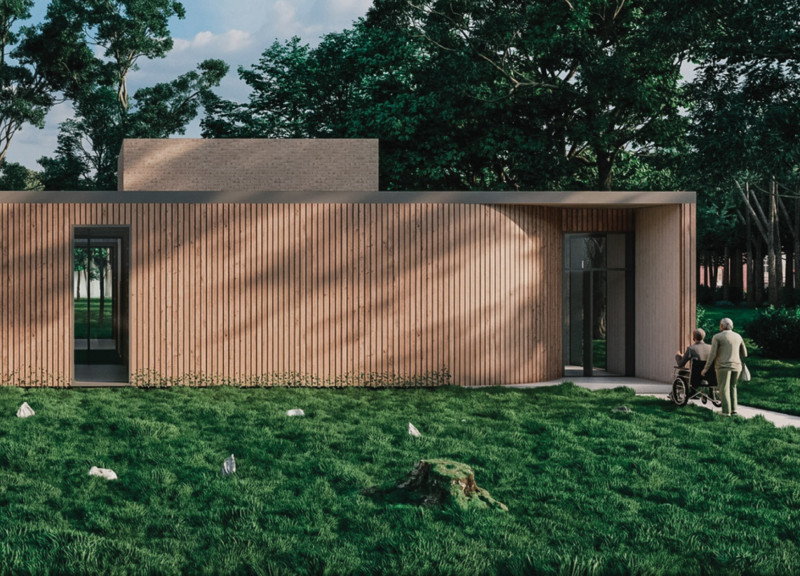5 key facts about this project
The hospice in the green belt of Cologne is designed to meet the needs of its users while blending with the natural environment. Located near the river Rhein, the building provides a retreat from city life and is easily accessible through public transport and motorways. The design focuses on creating a peaceful atmosphere that encourages reflection and supports community among residents.
Spatial Organization
The building features a single-floor rectangular layout with a central courtyard that connects communal and private spaces. This design allows for privacy while promoting interaction among residents and their families. Communal areas of various sizes are intentionally placed at the corners, encouraging social engagement while also providing quiet areas for individual contemplation.
Architectural Elements
Two distinct high points emerge from the rectangular form, serving as markers for important spaces within the structure. These vertical elements enhance the building's form while the mostly closed front façade adds to the sense of security and calm. This choice helps create an environment where users feel protected and at ease.
Light and Atmosphere
Natural light plays an important role throughout the design. Rooms along the intersecting axes are positioned to receive light from above, enriching the experience for the occupants. The contemplation room stands out as a space for solitude, emphasizing the design’s commitment to providing a peaceful and reflective atmosphere.
Materiality
Materials such as concrete and masonry are thoughtfully selected to enhance the calming nature of the interior spaces. This simple choice aligns with the goal of connecting the building to its natural surroundings. The ongoing relationship between materials and the landscape contributes to a serene environment, which supports the well-being of its users.
The inclusion of skylights in the contemplation room brings light into the space while also establishing a connection to the outside. This element encourages moments of quiet reflection, inviting occupants to feel at ease in their surroundings.



















































